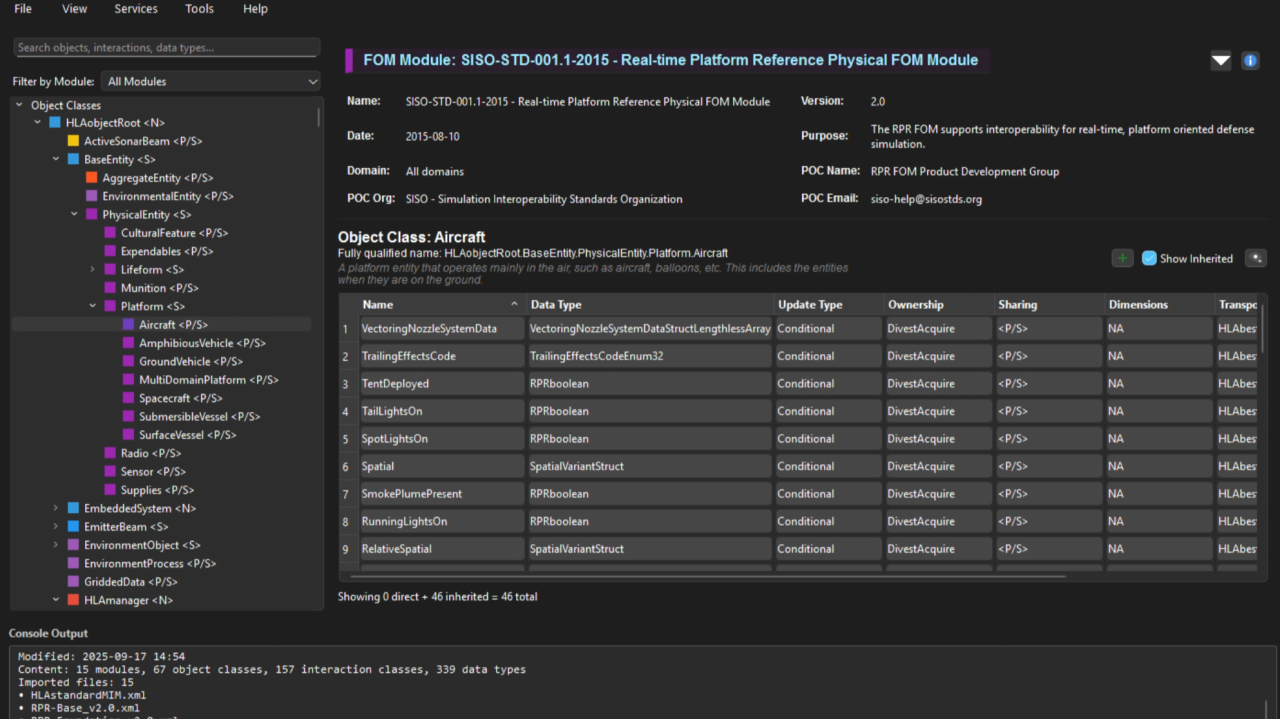
The Next Generation of the MAK FOM Editor
by Jim Kogler, VP of Products (You can find Jim's original article on LinkedIn)
Some years ago, a few of us at MAK embarked on a project to write a FOM Editor. For years, people could find and use the HTML MAK FOM Editor on our website (www.mak.com/fe). Recently, MAK retired that tool and developed the next generation of the MAK FOM Editor (MAK FOM Editor 2), which we now distribute for free on the MAK Bonus page.
To access it, first create an account on the MAK website (mak.com/create-an-account). Please also send a note to
While MAK has invested heavily in interoperability products over the years, to this point we have never been able to justify the business case for building a better HLA Object Model Editor. Most HLA users are consumers of FOMs developed by others, and MAK interoperability tools allow them to benefit from HLA without needing to know the finer details. That said, there has always been a group of HLA users who design or extend object models. MAK is part of this group; we are constantly extending the RPR FOM (and now the NETN FOM) as our product line advances and as we strive for easier interoperability. The advent of AI as a coding partner has likely changed the business calculus around building an HLA Object Model Editor. To better understand the benefits of generative AI in software development, we set out to build the next generation of the MAK FOM Editor.
The MAK FOM Editor is evolving quickly. We release new features, bug fixes, and improvements almost every week. Here we answer some of the common questions people may have about the MAK FOM Editor.
What HLA Versions Does it Support?
The MAK FOM Editor loads HLA 1516 (IEEE-1516 2000) and HLA Evolved (IEEE-1516 2010) FOMs. It exports both formats as well, but HLA 1516 has been much less tested. HLA 4 (IEEE-1516 2025) support will be added in the next few months.
Is MAK Supporting This Tool? What if I Discover a Bug?
Like other tools on our Bonus Page, MAK does not officially support this tool. That said, if you encounter a problem or want a new feature, please write to
Is it Documented?
The tool is documented. Like the rest of the tool, we used generative AI to write the documentation. What the AI produced was interesting and sometimes problematic, but it is improving all the time as we continue to refine it alongside the tool. We believe the documentation is already useful and productive, helping users get started quickly while also evolving toward greater clarity and completeness.
Tell Me About Updates!
At the current time, we are publishing updates to the MAK FOM Editor almost every week. MAK does not make announcements when an update is released. However, if the MAK FOM Editor is used on a computer that has access to the internet, the tool will automatically check for updates and provide a button to download the latest release. For users working in an offline environment, you will need to check back on the bonus page periodically to download the latest version.
Can I redistribute the MAK FOM Editor?
The editor is available free of charge for use in your project, but it comes without warranty or any commitment to address issues you may encounter. It is subject to the MAK EULA. If you find issues or would like to request new features, please submit your feedback through the MAK Support portal. We may address requests if time permits. See the MAK Bonus Page for details.
How Exactly Was the MAK FOM Editor Created?
MAK built and continues to update the FOM Editor with generative AI. An engineer curated the architecture, but Microsoft Copilot generated each of the 40,000 lines of code. As an engineering manager, this process was not very different from how we work with human engineers: provide an architecture, give guidance, and allow the engineers to code. In this case, we allowed the AI to code it. At times we rejected its work, asked for specific changes, or fully accepted what it produced, but we never hand-edited the code. We understand the code, and many times we wanted to edit it by hand knowing we could produce a better result, but this project was about letting the AI do the work. To that end, AI wrote the product entirely.

